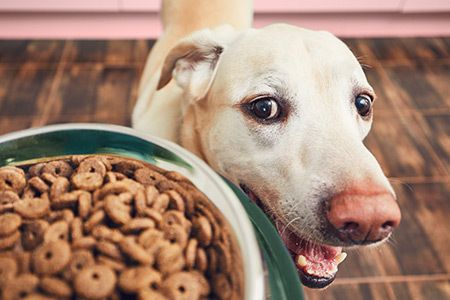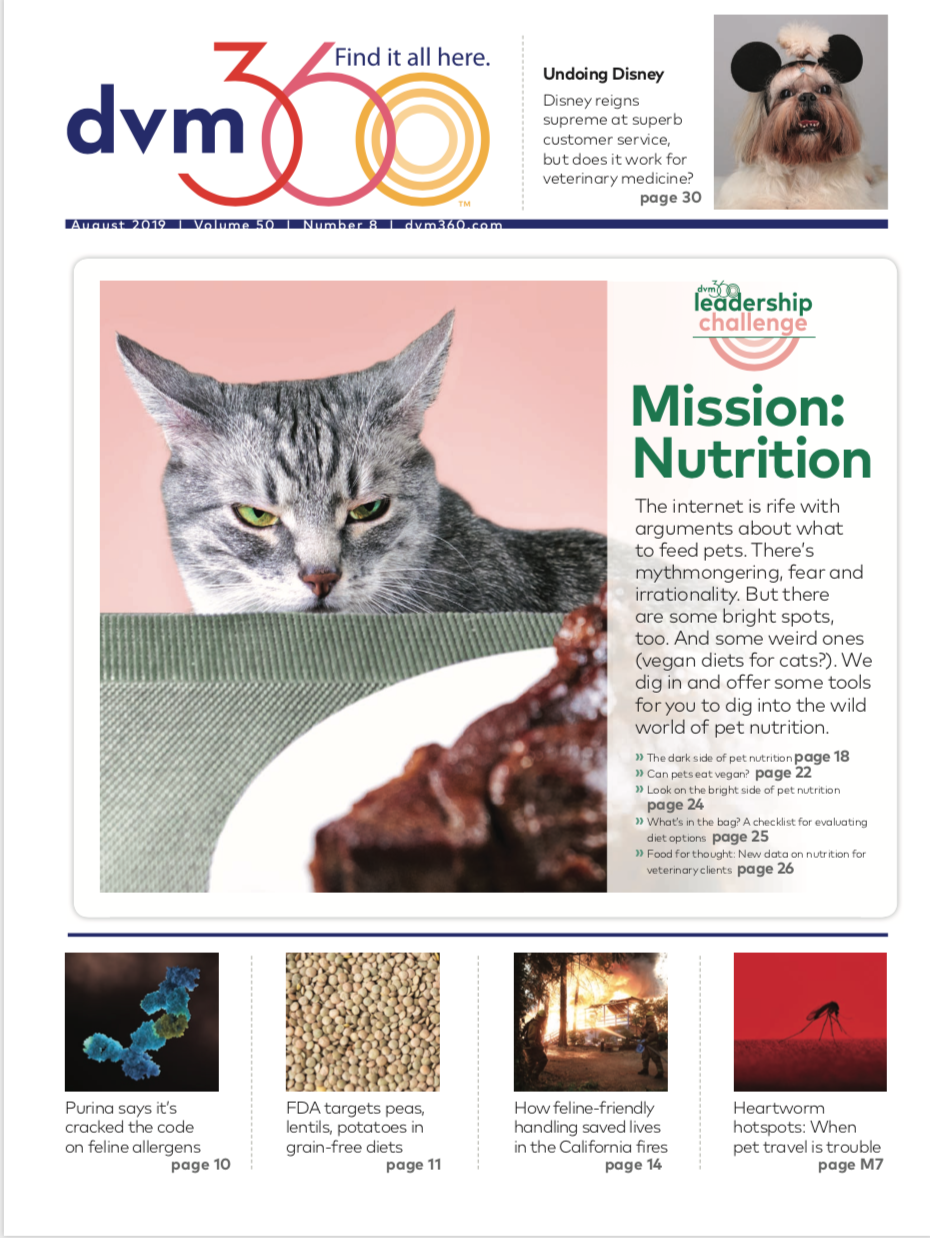The bright side of pet nutrition: Food and the human-animal bond
Mealtime and treats are a huge source of warm fuzzies for people and their pets—something veterinarians should recognize and celebrate. But there's danger lurking in the shadows: obesity, pancreatitis and other problems of overindulgence.
chalabala/stock.adobe.com

There's a reason we associate food with comfort. Eating—or preparing a meal for someone—can bring about a sense of peace and connection and deepen a bond. This is no different for people and their pets.
The act of feeding can nourish the human-animal bond, but it's also possible to have too much of a good thing.
Every veterinarian has seen the dachshund that hovers a little close to the ground or the plump cat that's still working on that summer bod. Owners of these pets often lament their companions' portliness, but they're hesitant to say no to the plaintive meows or soft, hopeful eyes of their furry friend. While pet owners generally mean well, it can be too easy to let this bond take over.
Deborah Linder, DVM, DACVN, head of the Tufts Obesity Clinic for Animals, has written extensively on the relationship between people and their pets and how they connect over food—and how sometimes this bond can reach a breaking point. Obesity is at epidemic proportions in pets, Dr. Linder writes, and can have a negative physical and emotional impact on animals. Even when counseled on responsible feeding and diet control, many pet owners find it difficult to keep their pet on a tight leash nutritionally.
Tony Buffington, DVM, PhD, DACVN, clinical professor of medicine and epidemiology at the University of California, Davis, School of Veterinary Medicine and emeritus professor of veterinary clinical sciences at The Ohio State University, says food is an important part of the human-animal bond, but it's also not the only way pet owners can show their pets they care.
“As we know, there are many ways to express love, of which food in only one. In my experience, owners may need help imagining other ways,” Dr. Buffington says, suggesting that veterinarians offer pet owners an easy, trustworthy guide. “A quick internet search for ‘show love for pets' yielded more than 25,000 hits. Practices can create a reasonable menu of options for pets and then provide recipes for whatever the client chooses. This approach supports the client's perception of control, and they always know more about their pet than I do.”
For pet owners who want to offer foods their pet enjoys, Dr. Buffington recommends they choose Association of American Feed Control Officials (AAFCO)–approved diets that line up with their beliefs about food, then purchase some options to offer to their pets, allowing the pet to select which one it prefers.
“I believe this approach enhances both the owner's and the pet's preferences and perception of control,” Dr. Buffington says.
As far as feeding strategies, Dr. Buffington says it's up to the owner to make sure pets are able to eat in a safe, nonthreatening context without competition or distraction. Along the same thread of quality over quantity, there are many ways to keep things fun for pets, he adds, without overindulging.
Sometimes, having pets “work for food” using food puzzles can provide important mental and physical stimulation, he says. The danger lies in focusing too much on food and creating behavioral issues.
“With regard to feeding, allowing competition, begging or ‘holding out for something better' can all become problematic, as can owner anxiety about their competence to provide for their pet,” Dr. Buffington says. “We and our pets survived evolution; as long as we stay within our animal's adaptive capacity with regard to nutrition, our pets will do fine.”
Rachael Zimlich, RN, BSN, is a former reporter for dvm360. In addition to freelance writing, she works as a registered nurse at the Cleveland Clinic in Cleveland, Ohio.
